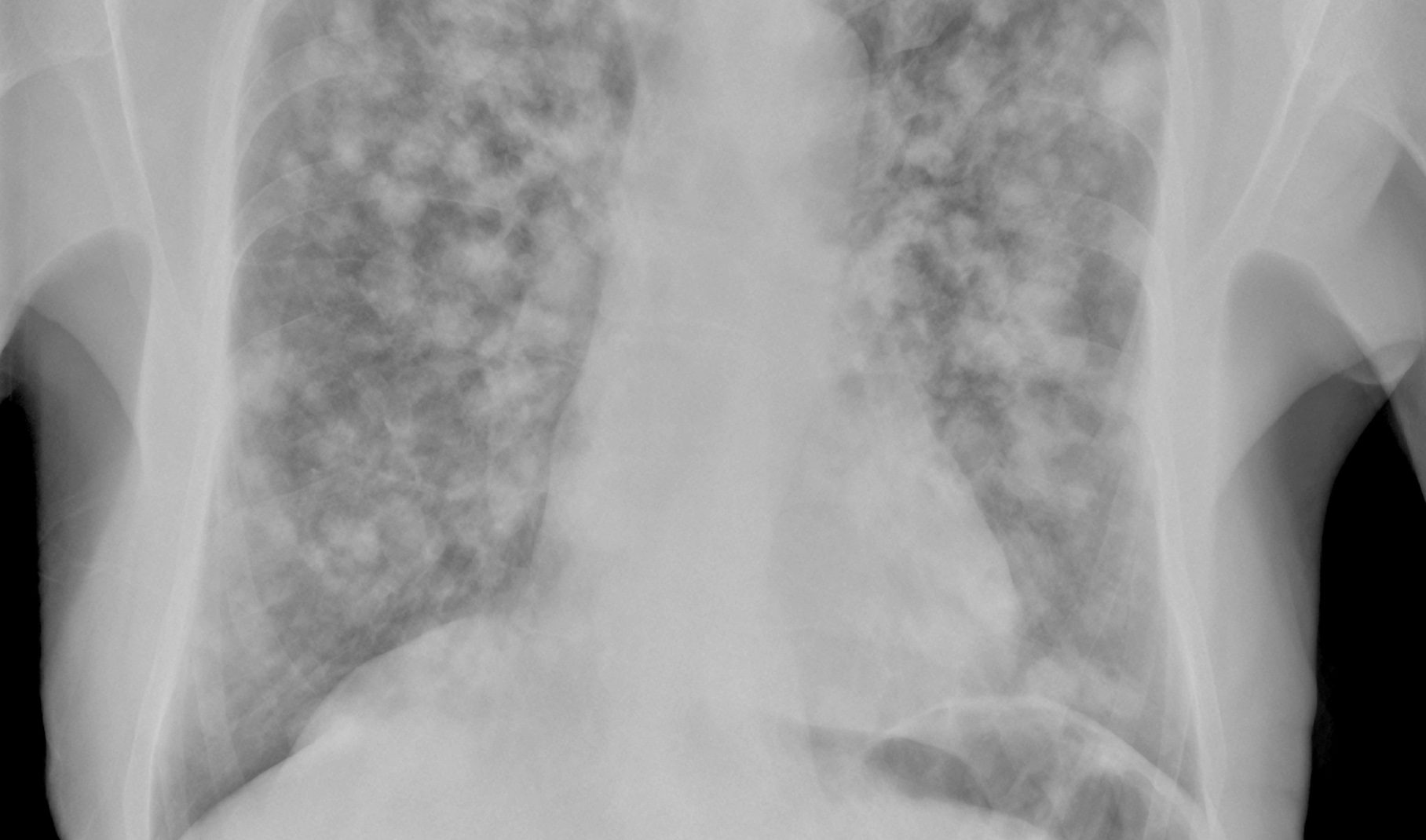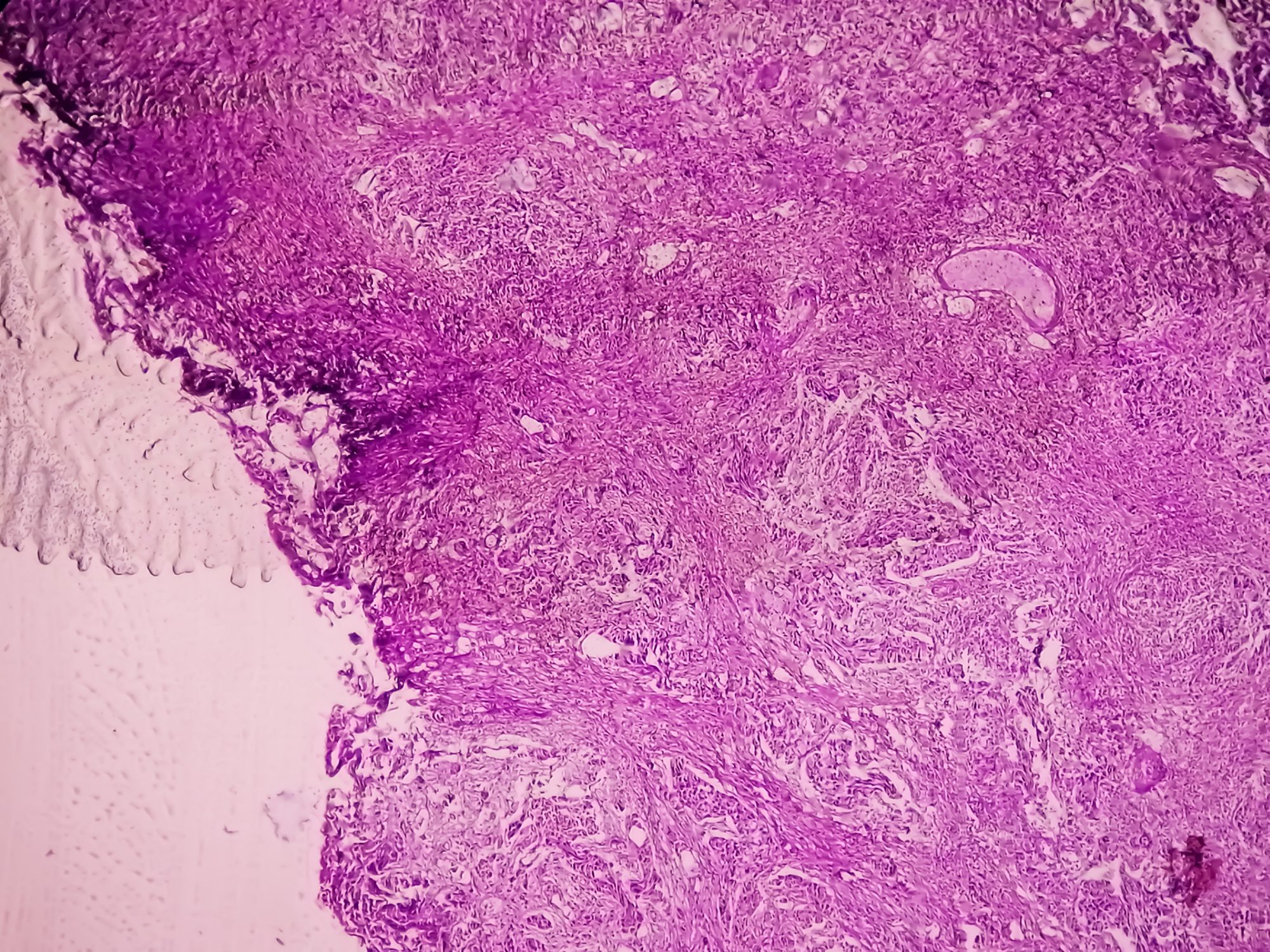Regular physical activity and increasing physical activity are part of the basic therapy for the treatment of type 2 diabetes in national and international guidelines. With structured aerobic exercise training, an average HbA1c reduction of –0.67% can be observed, with a duration of exercise therapy of more than 150 min/week of -0.89%. Even a daily brisk walk of five kilometers can achieve an HbA1c reduction of 1.5% and a blood pressure reduction of 10/7 mmHg.
Regular physical activity and increasing physical activity are part of the basic therapy for the treatment of type 2 diabetes in national and international guidelines. Structured aerobic exercise training can result in a mean HbA1c reduction of -0.67%, with a duration of exercise therapy of more than 150 min/week of -0.89% [1]. Even a daily brisk walk of five kilometers can achieve an HbA1c reduction of 1.5% and a blood pressure reduction of 10/7 mmHg [2].
Regular physical activity reduces the cardiovascular risk and is therefore recommended by the American Heart Association in 2019 for the primary prevention of cardiovascular disease [3]. Exercise and sport are helpful in treating arterial circulatory disorders and have a positive effect on the development and consequences of diabetic polyneuropathy [4,5].
Foot lesions are still one of the main complications of diabetes mellitus. The risk of developing diabetic foot syndrome (DFS) in the course of a lifetime is up to 34% for people with diabetes. The risk of dying within five years of the initial diagnosis of DFS is around 2.5 times higher for those affected than for people with diabetes without a foot lesion. An infected diabetic foot syndrome leads to more frequent hospitalizations than chronic heart failure and the costs for the complications of a diabetic foot syndrome are in some cases higher than the costs for the treatment of the most common types of cancer. The risk of ulcer recurrence is around 65% within the next three years after the initial diagnosis of the ulcer [6]. It is therefore a serious problem with high mortality, morbidity, suffering for those affected and considerable costs for the healthcare system.
Protecting the foot alone is no longer recommended today
After many years of predominantly recommending rest and relief to prevent diabetic foot syndrome, there has been increasing evidence in recent years that a moderate increase in exercise is safe even with an increased risk of diabetic foot syndrome [7,8]Therefore, the current IWGDF guidelines (International Working Group of the Diabetic Foot) on the prevention of diabetic foot syndrome found that people with diabetes and low to moderate risk of ulceration (IWGDF risk 1 and 2) and possibly even patients with a high risk of ulceration (IWGDF risk group 3) a moderate increase in the daily load on the foot through walking (e.g. a total of 1000 additional steps/day compared to the initial value) can be recommended (Table 1) [9].
The risk factors for the development of diabetic foot syndrome include diabetic polyneuropathy with the loss of protective pain perception, arterial circulatory disorders and reduced joint mobility of the ankles and foot joints, which leads to a change in the rolling process of the foot with the development of plantar peak pressures [10]. For this reason, it is being considered to improve foot and ankle function through gymnastic exercises and thus possibly prevent the development of ulcerations. Various studies have observed an improvement in foot rolling and a reduction in polyneuropathy symptoms as a result of gymnastic exercises [11–14].
The current IWGDF guidelines for the prevention of diabetic foot syndrome therefore recommend that people with a low to moderate risk of developing diabetic foot syndrome (IWGDF risk group 1 or 2) take part in an 8 to 12-week exercise program with ankle and foot exercises. This should ideally be introduced under professional guidance and then continued independently [9].
The exercise programs include stretching and strengthening exercises for the foot and ankle as well as functional exercises with gait and balance training. These exercises do not increase the risk of ulceration, but improve the mobility of the foot and ankle joints, signs of polyneuropathy and neuropathic complaints as well as the distribution of plantar pressure. The Brazilian working group led by Prof. Sacco has produced a brochure with easy-to-perform foot and ankle exercises and tested them in an initial feasibility study. This showed a high level of satisfaction with the program, no complications, a significant reduction in the severity of polyneuropathy, an improvement in hallux mobility and a reduction in midfoot dorsiflexion during gait, which is associated with better rolling [15]. The brochure was translated and published by members of the Diabetes, Sport and Exercise Working Group of the German Diabetes Association (DDG) with the permission of the authors. It is available free of charge on the websites of the AG Fuss and the AG Diabetes, Sport und Bewegung of the DDG (box). Patients with pre-ulcerative lesions or active DFS are currently not recommended to perform exercises that lead to mechanical stress on the foot [9].
There are currently few recommendations on the role of exercise after a diabetic foot syndrome or during an active ulcer. Due to the lack of evidence, no specific exercise therapy is currently recommended in the guidelines for these groups.
Fewer steps associated with better wound healing
A search for studies that deal with the healing of DFS and movement shows that there are practically no studies that focus on this issue. There are studies in which various relief techniques were examined and in which the number of steps was also recorded. In the review by van Netten et al. [16] On this topic, two studies that associated the number of steps with wound healing showed that a lower number of steps was associated with more frequent wound healing. However, the groups were small and different relief devices were used, most of which were removable, so it is possible that more steps were taken without adequate relief [17,18].
The Czech working group of Vrátná et al. [19] investigated the effects of a 12-week structured intervention with mobilization, stabilization and strengthening exercises as well as gait training on patients with healed DFS. In both the control and the intervention group, 15% of participants experienced ulcer recurrence within the study period. Although the increased exercise was not able to prevent ulceration over this short period, there was an increase in physical activity, muscle strength of the lower extremity and mobility of the large joints in the intervention group, without a higher risk of ulceration compared to the control group.
In a study by Eraydin and Avşar [20] in patients with acute diabetic foot syndrome, a significant reduction in wound size was observed during the study period of 12 weeks when foot exercises were performed. The exercises were performed in a seated position, i.e. they did not lead to increased pressure on the soles of the feet. One limitation of the study, however, is that despite randomization, the wound sizes in the intervention and control groups were different at the start of the study; the wound size in the intervention group was already smaller initially. As smaller lesions generally have a faster healing tendency, this could have distorted the outcome of the study.
Two pilot studies in recent years have looked at the feasibility and safety of exercise therapy for active diabetic foot syndrome. In the study by Lindberg et al. [21] five men with PNP and active ulcers took part in a 10-week training program with a bicycle ergometer, which resulted in a reduction in wound size; strength, endurance and independence improved during the study period. In the study by Aitken et al. [22] 20 participants carried out individual strength and endurance training, which was put together based on the location of the wound and the individual’s ability to participate in exercise. This showed that such an intervention is possible and safe; further studies on the individual benefits remain to be seen. The Danish working group around Lindberg has recently developed a 12-week training program for people with diabetic foot syndrome, where endurance training with the bicycle ergometer has been expanded to include strength training; an initial feasibility study with three participants was carried out and published [23].
As specific recommendations on the exact implementation of exercise programs for people in risk group 3 or those with active DFS have been lacking to date, the Spanish working group of Gracia-Sanchez et al. [24] corresponding expert recommendations using the Delphi method. The recommendations include general suggestions, such as checking the feet for lesions before and after every activity, as well as tips on choosing suitable socks and shoes. There are also specific training recommendations adapted to the respective foot risk (Table 2).
Conclusion
Sport and exercise are part of the basic therapy for diabetes mellitus. Foot complications are one of the main complications of diabetes, causing great suffering and considerable costs. A moderate increase in movement and performing specific foot exercises is safe for those at low to moderate risk of ulceration and can potentially prevent or delay the development of DFS. With regard to movement in existing foot wounds or after healed ulcers, there are only a few studies to date, some of which are methodologically flawed. There is evidence that non-weight-bearing exercises and foot exercises to improve mobility and build muscle may also be helpful in acute ulcers.
Specialized groups that perform adapted exercises for those with foot ulcers would be helpful to potentially prevent the considerable suffering that people with foot ulcers experience. In Germany, the instrument of rehabilitation sport, which enables free participation in special exercise groups over a period of up to three years, would be a good option here. Unfortunately, no such groups are currently offered nationwide. We urgently need further studies in order to be able to make optimized recommendations for patients with active ulcers or after healed ulcers.
Take-Home-Messages
- Exercise is helpful for people with diabetes to improve the metabolic situation, cardiovascular risk, peripheral arterial circulatory disorder and polyneuropathy.
- Those with polyneuropathy and a low to medium risk of ulceration can be recommended a moderate increase in movement and special foot exercises.
- Exercises to improve ankle and foot function can possibly counteract the development of diabetic foot syndrome.
- There is insufficient data on exercise in acute diabetic foot syndrome, but exercise programs that do not strain the wound area may help to maintain the fitness of those affected.
Literature:
- Umpierre D, Ribeiro PAB, Kramer CK, et al.: Physical activity advice only or structured exercise training and association with HbA1c levels in type 2 diabetes: A systematic review and meta-analysis. JAMA 2011; 305(17): 1790–1799; doi: 10.1001/jama.2011.576.
- Di Loreto C, Fanelli C, Lucidi P, et al.: Make Your Diabetic Patients Walk-Long-term impact of different amounts of physical activity on type 2 Diabetes. Diabetes Care 2005; 28(6): 1295–1302; doi: 10.2337/diacare.28.6.1295.
- Arnett DK, Blumenthal RS, Albert MA, et al.: 2019 ACC/AHA guideline on the primary prevention of cardiovascular disease: a report of the American College of Cardiology/American Heart Association Task Force on Clinical Practice Guidelines. J Am Coll Cardiol 2019; 74: e177–e232.
- Kanaley JA, Colberg SR, Corcoran MH, et al.: Exercise/Physical Activity in Individuals with Type 2 Diabetes: A Consensus Statement from the American College of Sports Medicine. Med Sci Sports Exerc 2022; 54(2): 353–368; doi: 10.1249/MSS.0000000000002800.
- Balletshofer B, Böckler D, Diener H, et al.: Positionspapier zur Diagnostik und Therapie der peripheren arteriellen Verschlusskrankheit (pAVK) bei Menschen mit Diabetes mellitus. Gemeinsame Stellungnahme der Deutschen Diabetes Gesellschaft (DDG), der Deutschen Gesellschaft für Angiologie (DGA), der Deutschen Gesellschaft für Interventionelle Radiologie und minimal-invasive Therapie (DeGIR) sowie der Deutschen Gesellschaft für Gefäßchirurgie und Gefäßmedizin (DGG). Diabetologie 2022; 17 (Suppl 2): S354–S364.
- Armstrong DG, Boulton AJM, Bus SA: Diabetic Foot Ulcers and Their Recurrence. N Engl J Med 2017; 376(24): 2367–2375.
- Lemaster JW, Mueller MJ, Reiber GE, et a.: Effect of weight-bearing activity on foot ulcer incidence in people with diabetic peripheral neuropathy: feet first randomized controlled trial. Phys Ther 2008; 88(11): 1385–1398; doi: 10.2522/ptj.20080019.
- Mueller MJ, Tuttle LJ, Lemaster JW, et al.: Weight-bearing versus nonweight-bearing exercise for persons with diabetes and peripheral neuropathy: a randomized controlled trial. Arch Phys Med Rehabil 2013; 94(5): 829–838; doi: 10.1016/j.apmr.2012.12.015.
- Bus SA, Sacco ICN, Monteiro-Soares M, et al.: Guidelines on the prevention of foot ulcers in persons with diabetes-IWGDF 2023 update. Diabetes Metab Res Rev 2023; doi: 10.1002/dmrr.3651.
- Francia P, Anichini R, Seghieri G, et al.: History, Prevalence and Assessment of Limited Joint Mobility, From Stiff Hand Syndrome to Diabetic Foot Ulcer Prevention: A Narrative Review of the Literature. Curr Diabetes Rev 2018; 14(5): 411–426; doi: 10.2174/1573399813666170816142731.
- Sartor CD, et al.: Effects of strengthening, stretching and functional training on foot function in patients with diabetic neuropathy: results of a randomized controlled trial. BMC Musculoskeletal Disorders 2014; 15: 137.
- Fayed EE, et al.: Exercise Therapy Improves Planter Pressure Distribution in Patients with Diabetic Peripheral Neuropathy. International Journal of PharmTech Research 2016; 9(5): 151–159.
- Cerrahoglu L, Kosan U, Sirin TC, Ulusoy A.: Range of Motion and Plantar Pressure Evaluation for the Effects of Self- Care Foot Exercises on Diabetic Patients with and Without Neuropathy. J Am Podiatr Med Assoc 2016; 106(3): 189–200.
- Iunes DH, Rocha CBJ, Borges NCS, et al.: Self-Care Associated with Home Exercises in Patients with Type 2 Diabetes Mellitus. PLoS One 2014; 9(12): e114151.
- Silva ÉQ, Santos DP, Beteli RI, et al.: Feasibility of a home based foot–ankle exercise programme for musculoskeletal dysfunctions in people with diabetes: randomised controlled FOotCAre (FOCA) Trial II. Scientifc Reports 2021; 11: 12404.
- van Netten JJ, Fijen VM, Bus SA: Weight-bearing physical activity in people with diabetes-related foot disease: A systematic review. Diabetes Metab Res Rev 2022; 38(6): e3552; doi: 10.1002/dmrr.3552.
- Najafi B, Grewal GS, Bharara M, et al.: Can’t stand the pressure: the association between unprotected standing, walking, and wound healing in people with diabetes. J Diabetes Sci Technol 2017; 11(4): 657–667; doi: 10.1177/1932296816662959.
- Bus SA, van Netten JJ, Kottink AIR, et al.: The efficacy of removable devices to offload and heal neuropathic plantar forefoot ulcers in people with diabetes: a single-blinded multicentre randomised controlled trial. Int Wound J 2018; 15(1): 65–74; doi: 10.1111/iwj.12835.
- Vrátná E, Husáková J, Jarosíková R, et al.: Effects of a 12-Week Interventional Exercise Programme on Muscle Strength, Mobility and Fitness in Patients With Diabetic Foot in Remission: Results From BIONEDIAN Randomised Controlled Trial. Front Endocrinol 2022; 13: 869128; doi: 10.3389/fendo.2022.869128.
- Eraydin S, Avşar G.: The Effect of Foot Exercises on Wound Healing in Type 2 Diabetic Patients With a Foot Ulcer. A Randomized Control Study. Journal of Wound, Ostomy and Continence Nursing 2018; 45(2): 123–130; doi: 10.1097/WON.000000000000040.
- Lindberg K, Møller BS, Kirketerp-Møller K, Kristensen MT: An exercise program for people with severe peripheral neuropathy and diabetic foot ulcers – a case series on feasibility and safety. Disabil Rehabil 2020; 42(2): 183–189; doi: 10.1080/09638288.2018.1494212.
- Aitken E, Hiew J, Hamilton EJ, et al.: Exercise in adults admitted to hospital with diabetes-related foot ulcers: a pilot study of feasibility and safety. Journal of Foot and Ankle Research 2023; 16: 18; doi: 10.1186/s13047-023-00616-0.
- Aagaard TV, Lindberg K, Brorson S, et al.: A 12-Week Supervised Exercise Therapy Program for Patients with Diabetic Foot Ulcers: Program Development and Preliminary Feasibility. The International Journal of Lower Extremity Wounds 2023; doi: 10.1177/15347346221149786.
- Gracia-Sanchez A, Lopez-Pineda A, Lazaro-Martínez JL, et al: Consensus-based recommendations on physical activity and exercise in patients with diabetes at risk of foot ulcerations: a Delphi study. Braz J Phys Ther 2023; 27(2): 100500; doi: 10.1016/j.bjpt.2023.100500.
InFo DIABETOLOGIE & ENDOKRINOLOGIE 2024; 1(2):10–14













